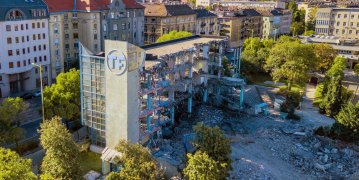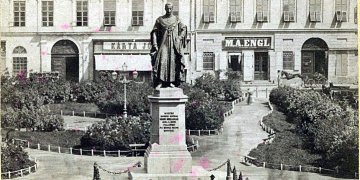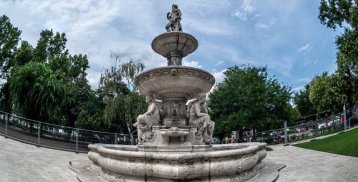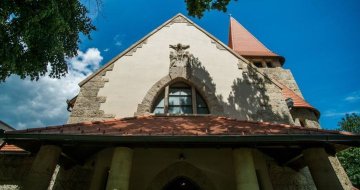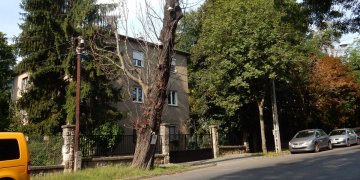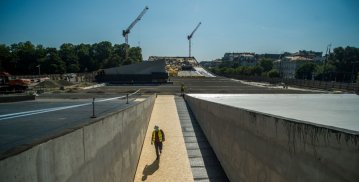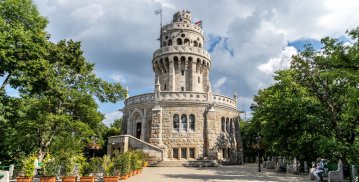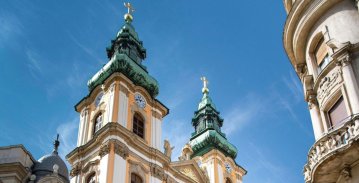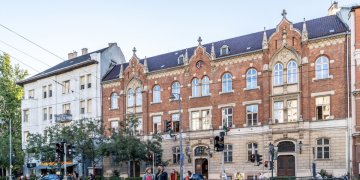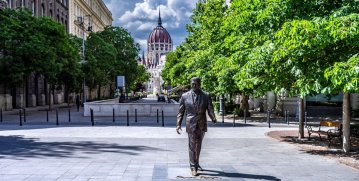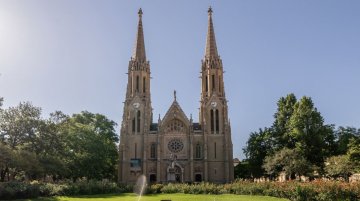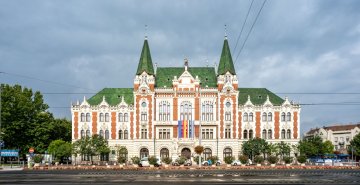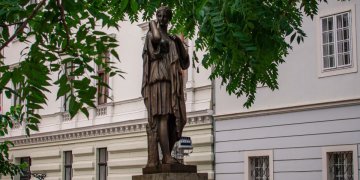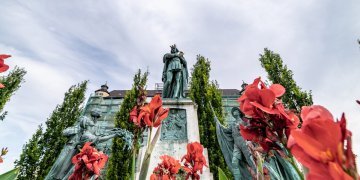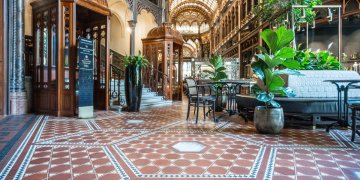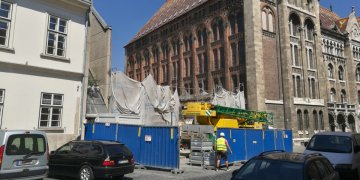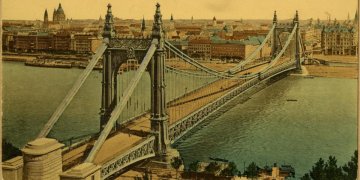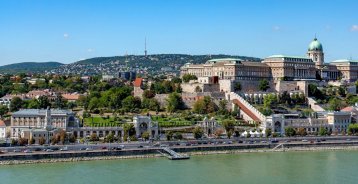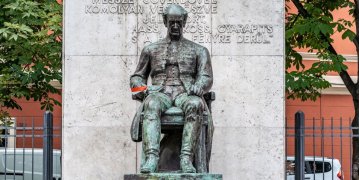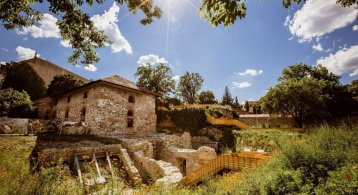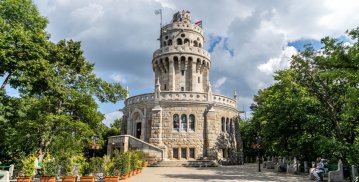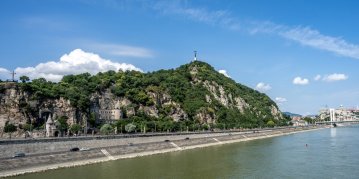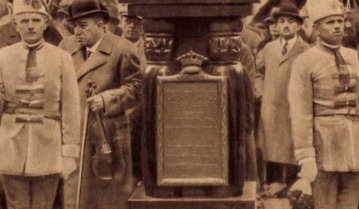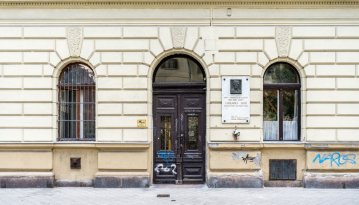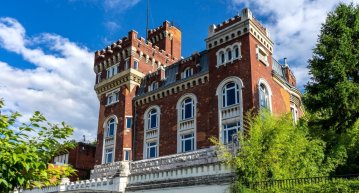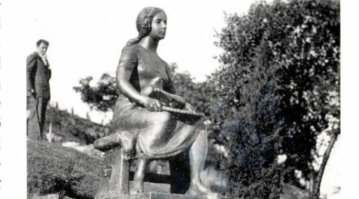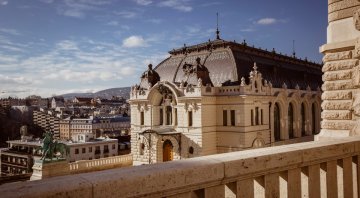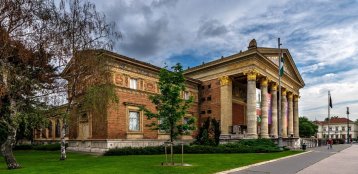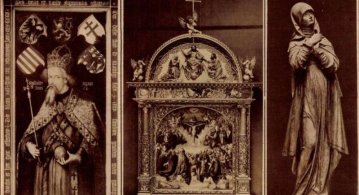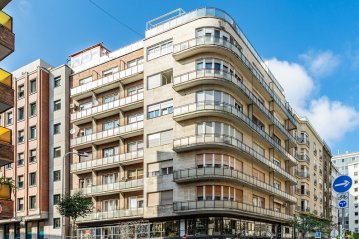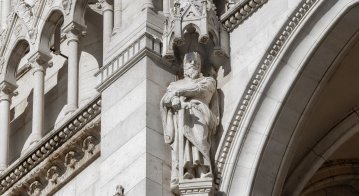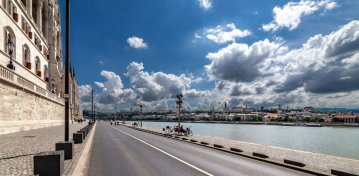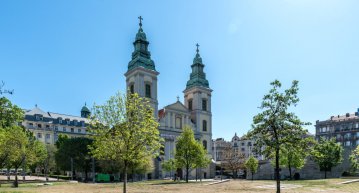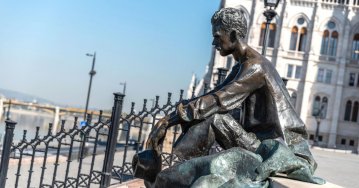 The Bridge Report, which brought a turning point in the history of Budapest
A travel report that changed the history of Pest and Buda, as well as Hungary. The little book contributed to the change of half a thousand years of legal customs and the implementation of an investment of unprecedented size and technical quality. This book was The Bridge Report [Hídjelentés in Hungarian].
The Bridge Report, which brought a turning point in the history of Budapest
A travel report that changed the history of Pest and Buda, as well as Hungary. The little book contributed to the change of half a thousand years of legal customs and the implementation of an investment of unprecedented size and technical quality. This book was The Bridge Report [Hídjelentés in Hungarian].
Search result
Old building of the University of Physical Education being demolished
September 18, 2020 at 4:00 PM
The demolition of the university building on Alkotás Street began recently, as the development of the campus enclosed by Alkotás street – Győri Road – Kis János Altábornagy Road continues. The new campus will offer students and educators a proper university environment to work and study in.
The most Hungarian Habsburg moved to Buda 225 years ago
September 17, 2020 at 11:00 AM
Eventually serving as Palatine of Hungary for over 50 years, the young prince being raised in Florence would never have been expected to later be known as the Most Hungarian Habsburg. Palatine Joseph was only 19 when he moved to Budapest with much ceremony 225 years ago. He settled in the country, lived here with his wife and children, died here and was buried in the crypt of the Royal Palace in Buda Castle. His popularity was founded on the attention he paid to the prosperity of Buda and Pest.
Danube, Tisza, Drava, Sava – Beautiful fountain in Budapest city centre to be renovated
September 16, 2020 at 3:00 PM
A beautiful fountain can be found in the centre of Budapest. Designed by Miklós Ybl, it depicts what were once the four largest rivers of Hungary: the Danube, the Tisza, the Drava and the Sava. Originally erected on Kalvin Square in 1883 it was severely damaged in the Second World War. A copy of the fountain and its statues were later erected on Erzsébet Square. Sadly, these were damaged, not by armed conflict but simply passers-by, leading to the foot of the Sava figure being broken off – a fault that will also be repaired with the complete renovation of the fountain.
Renovated Heart of Jesus Church blessed in Városmajor
September 14, 2020 at 5:00 PM
The renovation of the Heart of Jesus Church in Városmajor has been completed. The façade, interior and roof structure were replaced during the reconstruction. Designed by Aladár Árkay, the church served as a hall of worship for ten years and later became a scene of local community life.
Several weakened trees to be felled in Budapest
September 12, 2020 at 9:00 AM
Urban trees require constant care. As part of urban tree care in September, several dangerous, ill and weakened trees will be cut down and new saplings planted in their places. Complete tree-lined streets will be renewed in Wekerletelep in Kispest.
New synagogue opened in Buda
September 12, 2020 at 12:00 AM
New synagogue opened at the Alma Street orthodox Jewish Retirement Home in the 12th District
New building of the Museum of Ethnography reaches final height
September 10, 2020 at 3:00 PM
The new building for the Museum of Ethnography will be structurally complete this autumn and will open its doors to the public in 2022. The building is being constructed as part of the Liget Budapest Project on the site of the former car park on 56-osok Square.
Queen Consort Elizabeth and the most beautiful lookout tower in Budapest
September 8, 2020 at 9:00 AM
The Elizabeth Lookout Tower atop János Hill in Budapest was opened with much ceremony 110 years ago. The tiered, cylindrical tower of snow-white limestone has since then become an unmatched staple of the Buda Hills, as it is visible from large swathes of the city. The present form of the lookout tower should be attributed to Frigyes Schulek. To honour the tower's anniversary, we have collected various images and stories from its past.
Renovated University Church reopened
September 7, 2020 at 5:00 PM
The University Church of the Nativity of the Blessed Virgin Mary in the 5th District has been renovated. As part of the process the statues of the baroque building were restored, its sacristy renovated, the floor tiles replaced, the heating and electrical system modernised and the copper cladding of the spires repaired.
A street of celebrities – Writers, painters and inventors once lived along Bartók Béla Road
September 7, 2020 at 1:00 PM
There is a part of Budapest where a car factory, a barracks, university halls of residence, and the entirety of Hungarian literary life in the inter-war years lived peacefully side-by-side. All within 100 metres of each other. A small section of a wonderful road with wonderful places: the stretch of Bartók Béla Road between Szent Gellért [Saint Gerard] Square and the Körtér.
Statue of George H. W. Bush to be erected beside statue of Ronald Reagan on Szabadság Square
September 7, 2020 at 10:00 AM
A statue of President George H. W. Bush is to be erected in Budapest on Szabadság [Freedom] Square, alongside an existing statue of President Ronald Reagan. The monument will be inaugurated on the Hungarian National Holiday, 23 October to commemorate the 30-year anniversary of the fall of communism in Central and Eastern Europe.
One of the most beautiful churches in Budapest
August 30, 2020 at 9:00 AM
The parish church of St. Elizabeth of Hungary located on Rózsák Square, in the 7th District, will also be a venue of the International Eucharistic Congress next year. The building with a capacity of 2,560 people is a masterpiece by Imre Steindl, the designer of the Parliament, and one of the largest neo-Gothic churches in Budapest.
Újpest City Hall 120 years old
August 22, 2020 at 9:00 AM
One of the symbols of Újpest, the town hall, which was inaugurated 120 years ago, on 21 August 1900, was designed by the outstanding architects of the age, Ármin Hegedűs and Henrik Böhm. Originally a town hall and then city hall from 1907, the historic building, which bears Art Nouveau features, is still in the service of the local population.
The bells of Saint Stephen's Basilica – Hungarian and German masterpieces
August 21, 2020 at 9:00 AM
The historical value of the former and present bells in Saint Stephen's Basilica in Budapest is significant in terms of ecclesiastical, industrial and national history. Today’s large bell was donated by the German people in 1990 and was made by Perner in Passau. The bell was consecrated on 20 August 1990, thirty years ago. It is the largest bell in Hungary today.
Brides, stuntmen and sandbags have travelled on the Chairlift – Budapest's most unique means of public transport
August 19, 2020 at 10:00 AM
The János Hill chairlift is one of Budapest's most interesting means of transport and has been serving the city since 19 August 1970. There are several interesting facts connected to it. Few know that the first “passengers” on the chair lift were sandbags. A wedding was once held up in the air, and the Trapper jeans brand also shot a commercial on the lift, with a stuntman travelling above the city standing up.
A wandering Greek goddess that found a home next to Magdolna Tower – The Hebe Fountain has stood at several points of Buda Castle
August 17, 2020 at 9:00 AM
The Hebe Fountain in Buda Castle, also known as the Artemis Fountain, now stands in an intimate little unnamed square at the foot of the Magdolna Tower, at the northern end of Úri Street. It seems that this 19th century well statue, previously erected in two other places in the Castle, has found its final home. For various reasons, the Greek goddess has been moved from two other locations before. The nomadic statue also has two names: after its inauguration, it was identified from Greek mythology as the figure of Hebe, when in fact, it was a copy of a statue of Artemis in Paris.
Statue of Saint Emeric unveiled 90 years ago – Despite several plans, the memorial was never moved
August 16, 2020 at 10:00 AM
The statue of Saint Emeric erected in 1930 has survived the storms of history. Later it survived the battles of 1956 and the attacks of the socialist ideology untouched. Although its demolition was raised several times, the statue by Zsigmond Kisfaludi Strobl still stands where it was unveiled 90 years ago, as part of the events commemorating the 900th anniversary of Saint Emeric's death.
A footprint of Budapest – Stunning paving stones hide in old building around Budapest
August 15, 2020 at 10:00 AM
How many times have we been told to watch out steps? The saying can be useful when walking the streets of Budapest near open doorways because the capital's architecture is more than the facades facing the street! Entering through the gates, we drop into a closed world, where those paying attention will discover many beautiful details. The most colourful of these, in addition to painted glass windows, are floor pavings.
Most of the National Electric Load Distributor in the Castle has been demolished
August 14, 2020 at 9:00 AM
The demolition of the controversial-looking industrial building next to the Bécsi Kapu Square Palace of the Hungarian National Archives has progressed quickly in recent weeks. Only the tower, part of the iron structure and a firewall remain. The former National Electric Load Distributor that has been in a dilapidated condition for a long time will be replaced by a house
How have the bridges of Budapest changed after their construction?
August 10, 2020 at 12:00 PM
Pestbuda's summary presenting the reconstruction of the Chain Bridge in 1914 received many comments about the bridges of Budapest, their modifications and redesigns. Please join us on a glance through which bridge has changed in the decades since its construction.
A Day of Memorials will be held on 12 sites around Budapest
August 9, 2020 at 11:00 AM
Fans of history and culture are invited to 70 locations around the country on 29 August. Guided walks, performances, concerts and many other attractions are being organised at national and historical memorials.
In the footsteps of Kölcsey – The poet who wrote the national anthem of Hungary was born 230 years ago
August 8, 2020 at 4:00 PM
Ferenc Kölcsey, born 230 years ago, was one of the greatest figures of Hungarian literature and public life in the Reform Period. His poem, Himnusz ('hymn'), which became the Hungarian national anthem, elevated him among the immortals of Hungarian culture. Despite this, his memory was not marked in Budapest by any public statue or plaque for a long time. Pestbuda examines the current memorial to the great poet in Budapest.
The lid of a Venetian cure-all and a medieval staircase have been unearthed in the newest cultural area in Buda Castle
August 7, 2020 at 11:00 AM
The outdoor site of 9 Táncsics Street has been reborn as the T9 - The First Bastion archaeological exhibition and cultural community space. The former József Barracks and Prison building is continuously revealing the layers of its history. During the current archaeological excavation, the remains of a medieval and Ottoman building that used to stand here have emerged from under the floor of the house.
The Gothic-Revival wonders of Budapest
August 6, 2020 at 9:00 AM
The image of Budapest today is defined by a prolific period, the architecture of dualism. The most famous buildings of the capital, such as the Fisherman's Bastion, the Opera House, the Parliament and Saint Stephen's Basilica, were built in the second half of the 19th century. This period is characterized by a high degree of stylistic pluralism. Join PestBuda on a walk through the most stunning buildings in Budapest.
The highest point of Budapest – Elizabeth Lookout turns 110
August 2, 2020 at 3:00 PM
One of Sisi's favourite places to visit in Budapest. The highest point of the city houses one of Budapest's most popular lookout towers, the Elizabeth Lookout. The building, designed by Pál Kluzinger and Frigyes Schulek, was opened 110 years ago. Pestbuda climbed János Hill to honour the anniversary.
A neglected landmark – A walk on Gellért Hill
August 1, 2020 at 1:30 PM
Despite it being a symbol of Budapest, a popular walking destination, and a nature reserve in the city's heart, Gellért Hill has been neglected for decades. Unfortunately, the situation is beyond slight renovation – a complete replanning and reconstruction are needed.
The memory of János Bihari on Margit Island
July 26, 2020 at 3:00 PM
The history of an old statue on Margit Island hides many interesting things. How many people know today that the traditional symbol of the gipsies was a hedgehog? This symbol was included on János Bihari's, one of the most loved gipsy musicians dubbed the Gypsy King, statue on the Margit Island, created by a special figure of Hungarian statuary, the deaf-mute László Vaszary.
Jenő Cholnoky, one of the greatest Hungarian geographers, born 150 years ago
July 23, 2020 at 9:00 AM
Every day we walk past buildings whose past we know nothing about. The block of flats delimited by 29 Rákóczi Road - 1 Gyulai Pál Street - 4 Stáhly Street are similar. Today Pestbuda the site because the famous geographer Jenő Cholnoky was born 150 years ago and 100 years ago, in 1920, he moved here. His work is immense, yet he is mostly associated with the study of China and Lake Balaton. Look at his connections in Budapest with Pestbuda.
How did cars get into the City Park which has also been suggested as a site for a Formula 1 track?
July 22, 2020 at 1:00 PM
The City Park will be car-free, and the Kós Károly Promenade will be closed. But how did cars get into the City Park at all? Why does a busy main road lead through City Park, and how did it become a car park?
A little Genoa on Gellért Hill
July 21, 2020 at 11:00 AM
The Hegedüs Villa or originally the Schoch Villa is well known in Budapest, although few people know by its name. The mass of the building rises above the statue depicting Saint Gerard and the waterfall, so it is immediately noticeable when people drive from Pest to Buda across Erzsébet Bridge. Its medieval forms are less typical of early 20th century Hungarian architecture, according to urban legend, it is a copy of an Italian building. Pestbuda now reveals if the legend is true.
Lost to the World War – In the footsteps of a missing Cinderella statue
July 20, 2020 at 2:00 PM
In the playground on Gellért Hill, children would once quench their thirst at a fountain that depicted Cinderella. So in the 1920s, Budapest decided to order several fountains and statues depicting famous characters from stories. The goal was to ensure that the fountains would not only quench children's thirst but support their aesthetic sense.
"No one prepared us for the breathtaking experience" - The Riding Hall in Buda Castle Reborn
July 17, 2020 at 9:00 AM
People have admired the Lovarda ('riding hall') in Buda Castle, recently completed within the framework of the National Hauszmann Program, from the outside. They have not been able to look around inside yet, only see the beautiful interiors in photos. Pestbuda editors had the opportunity to visit the building as part of a guided tour. Alajos Hauszmann designed the riding hall, which was completed in 1901. Hence it is no surprise that the guided tour was called Hauszmann's Horses on the website of the National Hauszmann Program.
Renovation of Hall of Art to begin as Government confirm priority status
July 15, 2020 at 10:00 AM
The Government has declared the renovation of the Hall of Arts to be a project of national economic importance and investment of high public interest. The building was originally constructed in 1896 as part of the events to commemorate the millennium of Hungarians living in the Carpathian Basin. However, when work will begin on the building, designed by Albert Schickedanz and inaugurated by Franz Joseph, is currently unknown.
Dürer in Budapest – The Hungarian roots of an internationally respected painter
July 14, 2020 at 11:00 AM
Ajtósi Dürer Way is a busy and well-known road that runs alongside City Park. However, the roots of its name are less well-known. Albrecht Dürer was a world-renowned Bavarian Renaissance painter with Hungarian roots. His father was born in the Hungarian village of Ajtós next to Gyula, from where he emigrated to Nuremberg, where the famous artist was later born. The Hungarian roots of the painter were a well-known fact in Nuremberg as well. Thus, on the 400th anniversary of this death, a delegation from the city visited Budapest. The Bavarians gave the Hungarian capital a unique statue to commemorate the event, while Budapest named a road after the famous painter.
Born 125 years ago the architect Gedeon Gerlóczy is remembered as a saviour of Csontváry’s paintings
July 7, 2020 at 3:00 PM
Gedeon Gerlóczy was a leading figure of modern architecture in Hungary. Several of his buildings became landmarks in Budapest as it changed between the two world wars. As the designer of new hospitals, he became a pioneer for a modernist interpretation of these functional buildings. And as the saviour of several of Tivadar Csontváry Kosztka’s paintings, he is remembered as the “painting saving architect.”
Béla IV, died 750 years ago, founded Buda but does not even have a memorial plaque in the Castle District
July 6, 2020 at 8:00 AM
After the Tartar invasion, King Béla IV founded the city that is known today as Buda. He was looking for a place that would be impregnable during a next Mongol attack. He surrounded the plateau of Castle Hill with thick walls, parcelled and populated the area, and built monasteries and churches. Béla IV's Buda still exists today, the castle walls he built, the streets he walked on, the house walls and window frames he could see, the booths he could sit in, but not even a plaque preserves the name of the founder here.
Budapest to lease out the Embankment to Food Trucks
July 3, 2020 at 9:00 AM
City authorities to allow food trucks and movable food pavilions to be placed on the Lower Embankment on the Pest-side of the Danube between Margaret bridge and Eötvös Square between 18th July and 13th August. The majority of providers will be located at the foot of the Chain Bridge between the Danube and Széchenyi Square. The food trucks will serve foods, beverages and alcoholic drinks and must be open until midnight.
Budapest, as never seen before – Church towers in the city centre opened as viewpoints
June 27, 2020 at 1:00 PM
A unique attraction has been opened in Budapest following the renovation of the towers of the Inner City Parish Church as lookouts. The towers offer a new view of the magnificent Budapest cityscape.
Poetry Day Walk - Statues of the greatest Hungarian poets in Budapest
April 11, 2020 at 10:00 PM
On this year's National Poetry Day, 11 April - the birthday of Attila József - the public, community poem readings, which have already become a tradition, were cancelled, and we could not even visit the statues of the greatest Hungarian poets to show our respect and gratitude. Thus, Pestbuda offers only a virtual walk between the works depicting our national greats in Budapest.
 The Bridge Report, which brought a turning point in the history of Budapest
A travel report that changed the history of Pest and Buda, as well as Hungary. The little book contributed to the change of half a thousand years of legal customs and the implementation of an investment of unprecedented size and technical quality. This book was The Bridge Report [Hídjelentés in Hungarian].
The Bridge Report, which brought a turning point in the history of Budapest
A travel report that changed the history of Pest and Buda, as well as Hungary. The little book contributed to the change of half a thousand years of legal customs and the implementation of an investment of unprecedented size and technical quality. This book was The Bridge Report [Hídjelentés in Hungarian].
 Drama on the university wall - The heroic monument was planned 95 years ago
In the constant hustle and bustle of the Egyetem Square in Pest, the students may not even notice the monument that decorates the short section of wall between the church and the central building of ELTE. However, it commemorates their predecessors, the heroes who fought for their country in World War I, and those who heroically helped them. The first design of the dramatically collapsing soldier was born in 1928, ninety-five years ago.
Drama on the university wall - The heroic monument was planned 95 years ago
In the constant hustle and bustle of the Egyetem Square in Pest, the students may not even notice the monument that decorates the short section of wall between the church and the central building of ELTE. However, it commemorates their predecessors, the heroes who fought for their country in World War I, and those who heroically helped them. The first design of the dramatically collapsing soldier was born in 1928, ninety-five years ago.
 A message from the former school: An exhibition in memory of János Neumann was opened at the Fasori Secondary School
An exhibition was opened in János Neumann's former school, the Fasori Lutheran Secondary School, on the occasion of the 120th anniversary of the world-famous mathematician's birth. In the exhibition presenting the former Neumann milieu, paintings, graphics, photos, furniture, and objects tell the story of the art-supporting spirit of the noble bourgeois family at the turn of the century.
A message from the former school: An exhibition in memory of János Neumann was opened at the Fasori Secondary School
An exhibition was opened in János Neumann's former school, the Fasori Lutheran Secondary School, on the occasion of the 120th anniversary of the world-famous mathematician's birth. In the exhibition presenting the former Neumann milieu, paintings, graphics, photos, furniture, and objects tell the story of the art-supporting spirit of the noble bourgeois family at the turn of the century.

